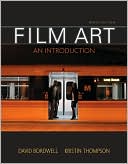Category Books
- Fiction Books & Literature
- Graphic Novels
- Horror
- Mystery & Crime
- Poetry
- Romance Books
- Science Fiction & Fantasy
- Thrillers
- Westerns
- Ages 0-2
- Ages 3-5
- Ages 6-8
- Ages 9-12
- Teens
- Children's Books
- African Americans
- Antiques & Collectibles
- Art, Architecture & Photography
- Bibles & Bible Studies
- Biography
- Business Books
- Christianity
- Computer Books & Technology Books
- Cookbooks, Food & Wine
- Crafts & Hobbies Books
- Education & Teaching
- Engineering
- Entertainment
- Foreign Languages
- Game Books
- Gay & Lesbian
- Health Books, Diet & Fitness Books
- History
- Home & Garden
- Humor Books
- Judaism & Judaica
- Law
- Medical Books
- New Age & Spirituality
- Nonfiction
- Parenting & Family
- Pets
- Philosophy
- Political Books & Current Events Books
- Psychology & Psychotherapy
- Reference
- Religion Books
- Science & Nature
- Self Improvement
- Sex & Relationships
- Social Sciences
- Sports & Adventure
- Study Guides & Test Prep
- Travel
- True Crime
- Weddings
- Women's Studies
Film Art: An Introduction » (9th Edition)

Authors: David Bordwell, Kristin Thompson
ISBN-13: 9780073386164, ISBN-10: 0073386162
Format: Paperback
Publisher: McGraw-Hill Companies, The
Date Published: November 2009
Edition: 9th Edition
Author Biography: David Bordwell
David Bordwell is Jacques Ledoux Professor Emeritus of Film Studies at the University of Wisconsin-Madison. He holds a master's degree and a doctorate in film from the University of Iowa. His books include The Films of Carl Theodor Dreyer (University of California Press, 1981), Narration in the Fiction Film (University of Wisconsin Press, 1985), Ozu and the Poetics of Cinema (Princeton University Press, 1988), Making Meaning: Inference and Rhetoric in the Interpretation of Cinema (Harvard University Press, 1989), The Cinema of Eisenstein (Harvard University Press, 1993), On the History of Film Style (Harvard University Press, 1997), Planet Hong Kong: Popular Cinema and the Art of Entertainment (Harvard University Press, 2000), Figures Traced in Light: On Cinematic Staging (University of California Press, 2005), The Way Hollywood Tells It: Story and Style in Modern Movies (University of California Press, 2006), and The Poetics of Cinema (Routledge, 2008). He has won a University Distinguished Teaching Award and was awarded an honorary degree by the University of Copenhagen. His we site is www.davidbordwell.net.
Kristin Thompson is an Honorary Fellow at the University of Wisconsin-Madison. She holds a master’s degree in film from the University of Iowa and a doctorate in film from the University of Wisconsin-Madison. She has published Eisenstein's Ivan the Terrible: A Neoformalist Analysis (Princeton University Press, 1981), Exporting Entertainment: America in the World Film Market 1907-1934 (British Film Institute, 1985), Breaking the Glass Armor: Neoformalist Film Analysis (Princeton University Press, 1988), Wooster Proposes, Jeeves Disposes, or, Le Mot Juste (James H. Heineman, 1992), Storytelling in the New Hollywood: Understanding Classical Narrative Technique (Harvard University Press, 1999), Storytelling in Film and Television (Harvard University Press, 2003), Herr Lubitsch Goes to Hollywood: German and American Film after World War I (Amsterdam University Press, 2005), and The Frodo Franchise: The Lord of the Rings and Modern Hollywood (University of California Press, 2007). She blogs with David at www.davidbordwell.net/blog. She maintains her own blog, "The Frodo Franchise," at www.kristinthompson.net/blog. In her spare time she studies Egyptology.
The authors have also collaborated on Film History: An Introduction (McGraw-Hill, 3rd. ed., 2010) and, with Janet Staiger, on The Classical Hollywood Cinema: Film Style and Mode of Production to 1960 (Columbia University Press, 1985).
Book Synopsis
Film is an art form with a language and an aesthetic all its own. Since 1979, David Bordwell and Kristin Thompson's Film Art has been the best-selling and widely respected introduction to the analysis of cinema.
Taking a skills-centered approach supported by a wide range of examples from various periods and countries, the authors strive to help students develop a core set of analytical skills that will deepen their understanding of any film, in any genre. Frame enlargements throughout the text enable students to view images taken directly from completed films, while an optional, text-specific tutorial CD-ROM helps clarify and reinforce specific concepts addressed in the text with the use of film clips. Building on these strengths, the ninth edition adds coverage of new technologies, updated examples, and references to the authors' acclaimed weblog to provide unparalleled currency and connect students with the world of cinema today.
Table of Contents
Part One: Film Art and Filmmaking
Chapter 1. Putting Films on ScreenPart Two: Film FormChapter 2. The Significance of Film FormChapter 3. Narrative as a Formal System
Part Three: Film StyleChapter 4. The Shot: Mise-en-SceneChapter 5. The Shot: CinematographyChapter 6. The Relation of Shot to Shot: EditingChapter 7. Sound in the Cinema Chapter 8. Style as a Formal System
Part Four: Types of FilmsChapter 9. Film GenresChapter 10. Documentary, Experimental, and Animated Films
Part Five: Critical Analysis of FilmsIntroduction: Writing a Critical Analysis of a FilmChapter 11. Sample Analyses
Part Six: Film Art and Film HistoryChapter 12. Film Art and Film History
Subjects

